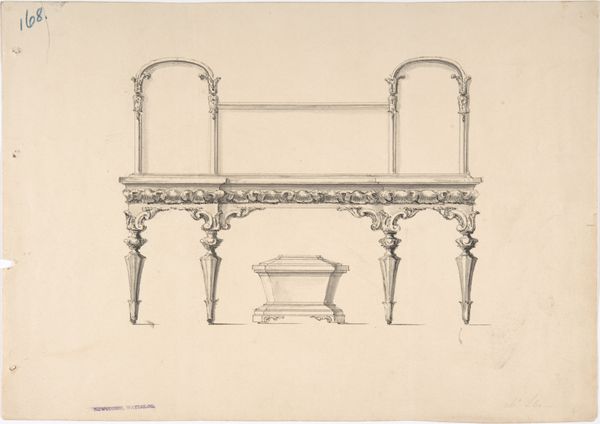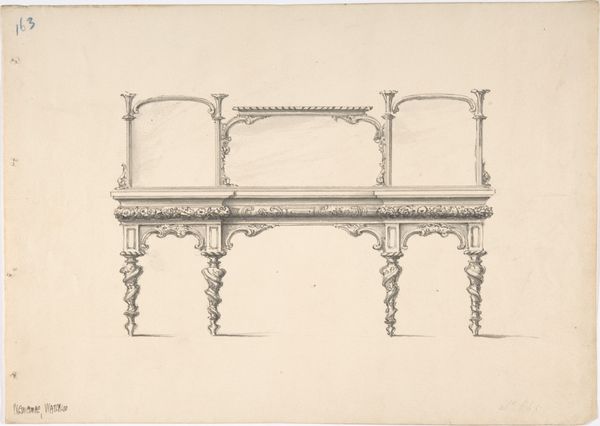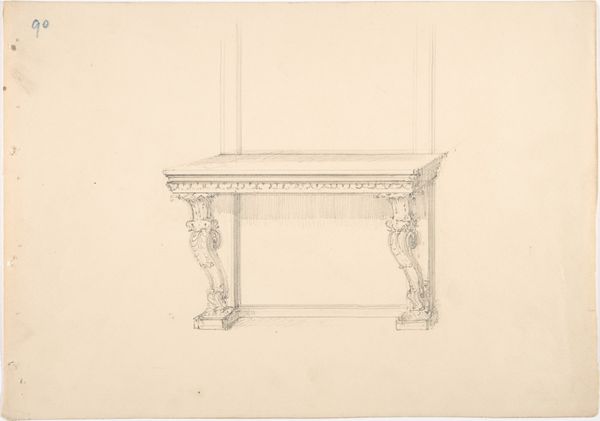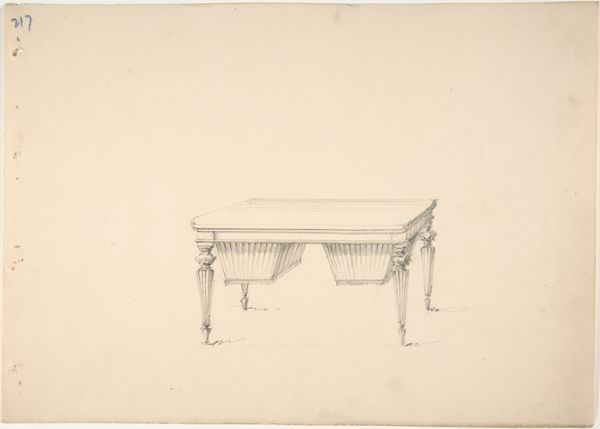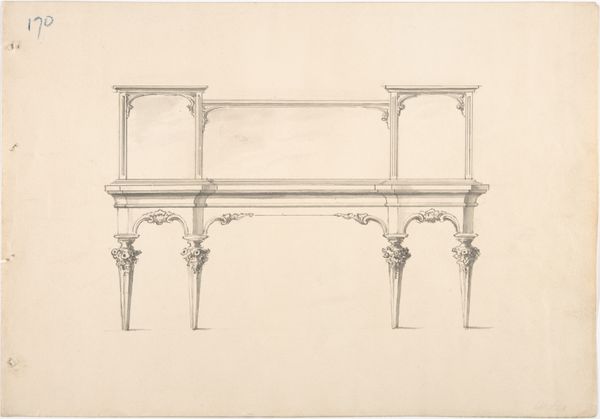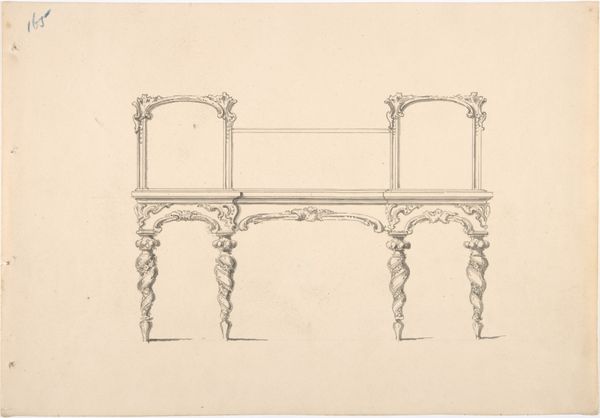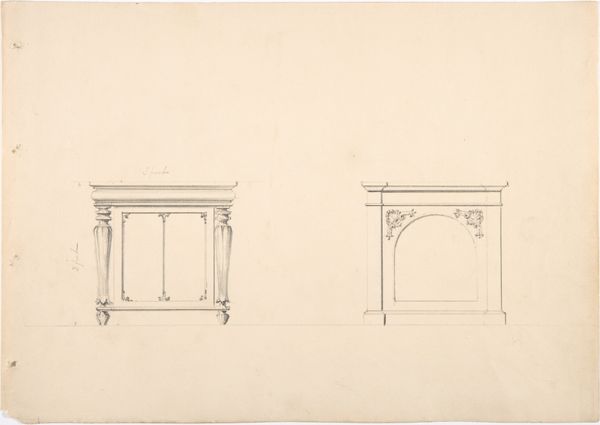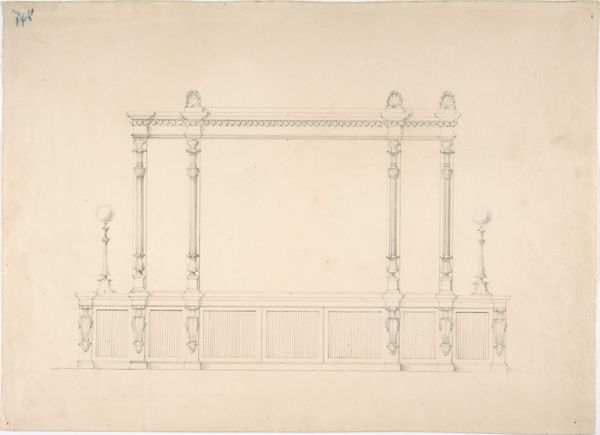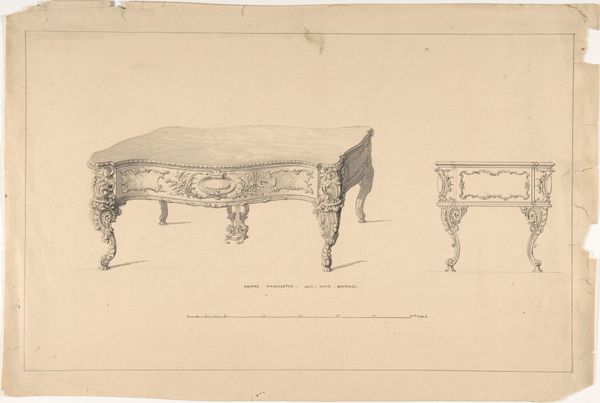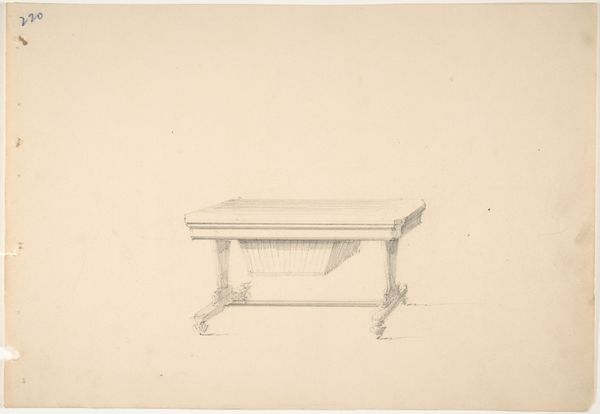
Design for a Mirrored Sideboard with Diminishing Legs and Foliate Ornament 1800 - 1850
0:00
0:00
drawing, print, paper, pencil
#
drawing
#
neoclacissism
# print
#
etching
#
paper
#
form
#
geometric
#
pencil
#
line
Dimensions: sheet: 8 11/16 x 12 5/16 in. (22 x 31.2 cm)
Copyright: Public Domain
Editor: Here we have an intriguing drawing entitled "Design for a Mirrored Sideboard with Diminishing Legs and Foliate Ornament," created sometime between 1800 and 1850. It appears to be a study in pencil, etching and print on paper. I’m immediately struck by the level of detail and symmetry in what’s ultimately a utilitarian object. What do you see in this piece? Curator: Beyond the clean lines and neoclassical aesthetic, it is interesting to see design so intentionally tied to power. This sideboard wasn’t just functional, it was meant to broadcast status, a display of wealth and taste in a period of intense social stratification. What are your thoughts on the role of mirrored surfaces in interiors of that era? Editor: I imagine mirrors expanded the perception of space and light, reinforcing that sense of grandeur you mentioned, but was that accessible to everyone? Curator: Absolutely not. Mirror production was expensive. By incorporating such design elements into everyday items, the aristocracy solidified their visual language. Consider how spaces themselves – palaces, great homes – become tools for control, for managing perception, reflecting a highly curated image of power. Editor: So the sideboard design embodies the values and social structures of the period in which it was created? Curator: Precisely. By examining these objects, we gain insight into not only the aesthetic preferences but also the power dynamics at play during the Neoclassical era. These designs are not innocent. They perform labor, defining roles and behaviors of all involved. Editor: That’s a fascinating perspective. I hadn't considered the design in the way that those visual markers can reflect an image of societal aspirations. Curator: These visual artifacts, though seemingly innocuous, held significant meaning, acting as silent but powerful communicators within their social contexts.
Comments
No comments
Be the first to comment and join the conversation on the ultimate creative platform.
